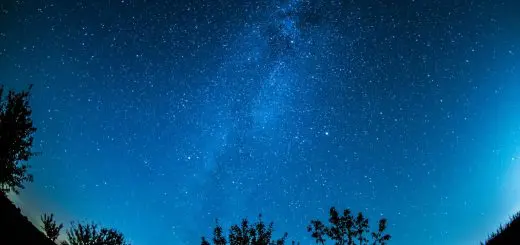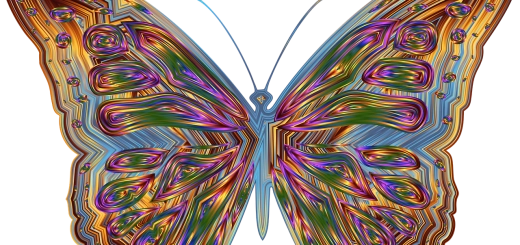How Did Life Begin? Unraveling the Big Questions

Looking for more amazing products? Check out our online store and explore our collection here! Happy shopping!
Before diving in, please note: This post is for informational purposes only. If you’d like to know more about how we approach topics, feel free to check out our friendly Disclaimer Page.
Hey there, amazing readers! 
We’re committed to delivering quality posts, and your support (even just sticking around despite the ads) means everything to us. So, bear with us, and thanks for helping us keep the good vibes rolling. Now, on to the fun stuff!
TRANSLATE BUTTON AT THE END OF THE ARTICLE
A Quick Overview
Life on Earth is a grand tapestry woven with threads of mystery and wonder.
From the tiniest microbes to the majestic redwoods, the question of how life began captivates scientists, philosophers, and curious minds alike.
This article dives deep into the fascinating theories and discoveries that attempt to explain this age-old enigma.
Grab your favorite beverage, and let’s embark on this journey together!
A Journey Through Time: The Origins of Life
Imagine Earth about 4 billion years ago.
The planet was a chaotic scene filled with volcanic eruptions, torrential rains, and an atmosphere that was vastly different from what we breathe today.
Yet, amidst this tumult, something extraordinary was set to unfold.
Scientists agree that life likely began in the ocean, where the right conditions led to the emergence of the first simple organisms.
This time period is often referred to as the Hadean and Archean eons.
During these eons, Earth was a hot mess, literally!
The intense heat from volcanic activity and the bombardment from comets created a conducive environment for chemical reactions.
The fossil record shows that the first signs of life were microorganisms.
These tiny life forms were primitive yet remarkable.
They didn’t need much: just some essential elements and a warm, watery environment.
Can you imagine those first little cells?
They were like the pioneers of life, ready to explore a world that was ripe for evolution.
The beauty of this journey lies in the tiny, almost incomprehensible changes that took place over millions of years.
Those first microorganisms began to evolve, adapt, and thrive.
As they did, the planet transformed, paving the way for the diverse life forms we see today.
Theories That Spark Curiosity: How Life Started
There are a variety of theories surrounding the origins of life, each with its unique flair.
Here are some of the most popular:
Abiogenesis: This theory proposes that life arose from non-living matter through natural processes.
Think of it as life springing from a chemical soup!
Panspermia: Imagine life arriving on Earth from outer space!
This theory suggests that microscopic life forms traveled on meteoroids or comets and landed on our planet, giving life a jumpstart.
Hydrothermal Vent Hypothesis: Some researchers believe that life began in the depths of the ocean, near hydrothermal vents.
These vents spew hot, mineral-rich water, creating an environment that may have nurtured early life.
Explore the Path to Spirituality and Enlightenment – Start Here.

RNA World Hypothesis: This theory posits that RNA, a molecule essential for life today, was one of the first biological molecules.
It could replicate itself, making it a suitable candidate for the origin of life.
Each theory has its supporters and skeptics.
I find it fascinating how these concepts intertwine science, philosophy, and a little bit of imagination.
The discussions surrounding them are often lively and thought-provoking.
Who knows?
The answer could be a blend of several theories!
From Cosmic Dust to Cells: A Stellar Origin Story
Let’s travel further back in time – to the very beginning of the universe.
After the Big Bang, around 13.8 billion years ago, matter started to coalesce into stars and galaxies.
These stellar bodies are the universe’s forges, creating the elements necessary for life: hydrogen, carbon, oxygen, and nitrogen.
Stars live, shine, and eventually die, releasing their material into space.
When these stars exploded in supernovae, they scattered cosmic dust rich in essential elements across the universe.
This dust eventually found its way to Earth, providing the building blocks for the first organic molecules.
Picture this: Earth was a cosmic melting pot.
Through a series of chemical reactions, simple molecules combined to form more complex ones.
These compounds started to gather in the early oceans, creating a “primordial broth.” It’s almost poetic to think that the very materials that created us came from the stars!
This stellar origin story paints a picture of interconnectedness.
Our very existence is tied to the cosmos, reminding us that we are, in a way, stardust.
How cool is that?
The Role of Water: Our Planet’s Essential Ingredient
Water is often called the “universal solvent,” and for good reason!
It plays a crucial role in the origin of life.
Without water, life as we know it wouldn’t exist.
It’s the medium in which all biological reactions occur.
Think of it as the stage where life performs its grand play.
The early Earth was enveloped in oceans, which provided a safe haven for the first living organisms.
Water allowed for the mixing of different chemical compounds, facilitating reactions that led to the formation of complex molecules.
It’s like a cosmic kitchen where ingredients danced together to create something marvelous.
Additionally, water has unique properties that make it essential for life.
Its ability to dissolve a wide range of substances allows for nutrient transport and cellular functions.
It also helps regulate temperature, creating a stable environment for life to thrive.
The significance of water goes beyond just being a solvent.
It has influenced the evolution of life itself.
Many organisms adapted to life in water before venturing onto land.
Isn’t it amazing how such a simple molecule is so pivotal to our existence?
Breaking Down Theories: Primordial Soup Explained
The primordial soup theory, first suggested by scientists like Alexander Oparin and J.B.S.
Haldane in the 1920s, is a compelling idea explaining how life began.
Imagine a vast, warm sea filled with organic compounds, ready and waiting for the spark of life.
According to this theory, Earth’s early atmosphere was rich in methane, ammonia, hydrogen, and water vapor.
These gases interacted with energy sources, such as lightning and UV radiation, creating a cocktail of organic molecules.
In 1953, Stanley Miller and Harold Urey conducted a famous experiment that simulated these conditions.
They created amino acids, the building blocks of proteins, by passing electrical sparks through a mixture of gases.
This groundbreaking work provided tantalizing evidence that life’s components could arise from inorganic materials.
However, the primordial soup theory isn’t without its critics.
Some argue that the conditions on early Earth might not have been as conducive as once thought.
Others suggest alternative explanations, like the deep-sea vents mentioned earlier.
Despite the debates, the primordial soup theory remains a pivotal piece of the puzzle.
Life’s Building Blocks: What Are Amino Acids?
Amino acids are often called the "building blocks of life," and they deserve the spotlight.
These organic compounds contain both an amine group and a carboxylic acid group, giving them the unique ability to form proteins.
Why are proteins so vital?
They perform a variety of functions in living organisms, from serving as enzymes that catalyze biochemical reactions to forming structures like muscles and tissues.
Without amino acids, life as we know it simply wouldn’t exist.
There are 20 standard amino acids, each with its unique properties.
They combine in different sequences to create thousands of proteins.
It’s like having a set of colorful LEGO blocks – the possibilities are endless!
The process of protein synthesis is a fascinating dance.
First, DNA provides the instructions for creating proteins.
Then, RNA translates these instructions, and amino acids are assembled into proteins in a cell’s ribosomes.
This intricate process is a testament to the complexity and beauty of life.
The emergence of amino acids in the primordial soup could have been a game-changer.
They might have contributed to the formation of the first simple proteins, paving the way for more complex life forms.
The Power of Molecules: RNA and the First Life Forms
When discussing the origin of life, RNA often takes center stage.
The RNA world hypothesis suggests that before DNA and proteins, RNA served as both genetic material and a catalyst for chemical reactions.
It’s an intriguing idea that indicates RNA could have played a dual role in early life.
Why RNA, you may ask?
Unlike DNA, RNA can replicate itself and catalyze chemical reactions.
This means it could have allowed for the formation of simple life forms that could evolve and adapt.
Picture a little RNA molecule replicating itself in the primordial soup, setting off a chain reaction of biological processes.
Scientists have even created RNA molecules in the lab that can catalyze reactions.
This points to the idea that life could have originated from simple RNA molecules evolving into more complex forms over time.
The transition from RNA to DNA, which is more stable and efficient, marks a significant milestone in the evolution of life.
This shift enabled organisms to store more complex information and adapt to their environments more effectively.
From Simplicity to Complexity: Evolution Begins
Once life took root, the next chapter began: evolution.
What’s fascinating about evolution is how it builds complexity from simple beginnings.
The first life forms were single-celled organisms, but over billions of years, they evolved into the vast diversity of life we see today.
Natural selection, a concept popularized by Charles Darwin, plays a significant role in this process.
Organisms that are better adapted to their environments are more likely to survive and reproduce.
This leads to the gradual accumulation of traits that enhance survival.
Consider the humble bacteria.
They were the first to emerge and are still thriving today.
Their adaptability is remarkable.
They can survive in extreme environments, from the depths of the ocean to the guts of animals.
Over time, they developed various strategies to cope with challenges, laying the groundwork for more complex life forms.
The evolution of multicellular organisms marked a turning point.
Simple cells began to cooperate and specialize, leading to the formation of tissues and organs.
This paved the way for plants, animals, and eventually us!
It’s a reminder that life is a journey of adaptation, survival, and growth.
The Big Bang and Beyond: Cosmic Context Matters
Understanding the origins of life requires considering the universe’s vast context.
The Big Bang set off a chain of events that formed stars, galaxies, and planets, ultimately leading to our little blue planet.
The formation of Earth was just one chapter in a much larger story.
Cosmological events, like supernovae and the collision of celestial bodies, played significant roles in shaping the conditions necessary for life.
For instance, the moon’s formation stabilized Earth’s rotation, creating a predictable environment for life to evolve.
Moreover, the cosmic abundance of elements vital for life, such as carbon and oxygen, highlights our connection to the universe.
The same processes that forged stars and galaxies also forged the elements that comprise our bodies.
As we look up at the night sky, we are reminded that we are part of something much larger.
The same atoms that make up our DNA were once forged in the heart of a star.
That perspective is humbling and awe-inspiring.
Extremophiles: Life’s Resilience in Harsh Conditions
Life’s ability to thrive in extreme conditions is a testament to its resilience.
Extremophiles are organisms that flourish in environments that would be inhospitable to most life forms.
They can be found in boiling hot springs, deep-sea vents, and even the icy realms of Antarctica.
These extraordinary organisms offer clues about the potential for life beyond Earth.
If life can thrive in such extreme conditions here, what about other planets?
The search for extraterrestrial life often focuses on extreme environments, such as the subsurface oceans of Europa, one of Jupiter’s moons.
Studying extremophiles also has practical implications.
They produce enzymes and compounds that have applications in biotechnology, medicine, and industry.
For instance, DNA polymerases from thermophiles are essential in the polymerase chain reaction (PCR), a technique widely used in genetic research.
The existence of extremophiles challenges our understanding of life’s limits and adaptability.
They remind us that life is tenacious, pushing the boundaries of where it can exist.
The Search for Extraterrestrial Life: Are We Alone?
The question of whether we are alone in the universe captivates many.
Scientists are actively searching for signs of life beyond Earth.
Missions to Mars, observations of exoplanets, and the study of extraterrestrial environments are all part of this exciting quest.
Mars is a prime candidate because it bears similarities to Earth.
Scientists have found evidence of ancient water flows and organic molecules, sparking hope for past microbial life.
Beyond Mars, the discovery of exoplanets in the habitable zone (where conditions might support life) adds to the intrigue.
The Kepler space telescope has identified thousands of these distant worlds, each sparking the imagination about the possibilities of life elsewhere.
While no definitive evidence exists yet, the search continues.
The discovery of life beyond Earth would revolutionize our understanding of the universe and our place within it.
Unanswered Questions: The Mystery Continues!
Despite our advances in understanding life’s origins, many questions remain unanswered.
How did the first complex molecules emerge?
What specific conditions gave rise to the first cellular life?
The quest to unravel these mysteries is ongoing and ever-evolving.
Scientists are constantly experimenting, hypothesizing, and refining their theories.
Each discovery brings us closer to understanding our origins, but also opens up new questions.
Sometimes, I think about how the pursuit of these answers reflects the human spirit.
It’s a quest for knowledge, a desire to connect with our past, and an exploration of the unknown.
After all, isn’t that what makes us human?
Conclusion
The origins of life are a captivating story filled with scientific marvels and philosophical ponderings.
From the primordial soup to the evolution of complex organisms, every step of this journey is fascinating.
While many questions linger, the pursuit of understanding is what drives us forward.
As we continue to unravel the mysteries of life’s beginnings, we uncover not only the story of our planet but also our cosmic heritage.
So, the next time you gaze at the stars, remember that you are part of this beautiful tapestry of life that stretches across time and space.

The Enlightenment Journey is a remarkable collection of writings authored by a distinguished group of experts in the fields of spirituality, new age, and esoteric knowledge.
This anthology features a diverse assembly of well-experienced authors who bring their profound insights and credible perspectives to the forefront.
Each contributor possesses a wealth of knowledge and wisdom, making them authorities in their respective domains.
Together, they offer readers a transformative journey into the realms of spiritual growth, self-discovery, and esoteric enlightenment.
The Enlightenment Journey is a testament to the collective expertise of these luminaries, providing readers with a rich tapestry of ideas and information to illuminate their spiritual path.
Our Diverse Expertise
While our primary focus is on spirituality and esotericism, we are equally passionate about exploring a wide range of other topics and niches 

To ensure we provide the most accurate and valuable insights, we collaborate with trusted experts in their respective domains 
Our blog originally focused on spirituality and metaphysics, but we’ve since expanded to cover a wide range of niches. Don’t worry—we continue to publish a lot of articles on spirituality! Frequently visit our blog to explore our diverse content and stay tuned for more insightful reads.
Hey there, amazing reader! 
Check out our store here and take a peek at some of our featured products below! Thanks for being awesome!













